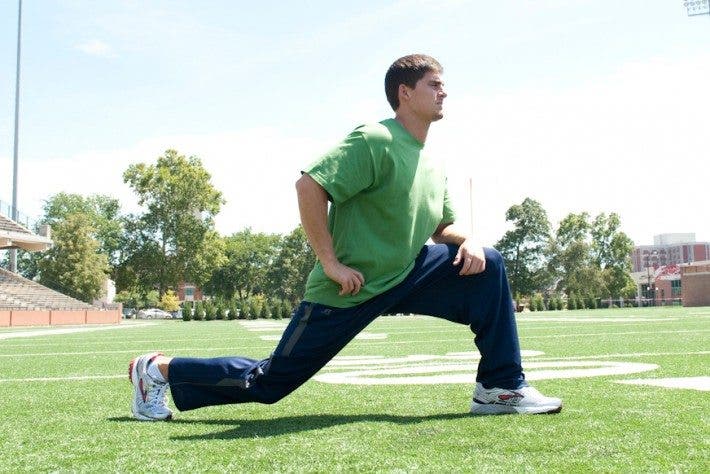Running a half marathon is not easy. If so, the half marathons would not be secondary events of less importance than they are. It doesn’t matter if you want to complete it as a personal achievement or in preparation for a full marathon, finishing past that finish line is an impressive achievement and something to be very proud of.
This program is only a guide. Feel free to make small modifications to make it suit your life better. Also, consider the possibility of contacting an athletic trainer to take your workouts with more personalization.
Preliminary considerations
Half marathons are very demanding tests, so before you start preparing to run a half marathon you should have a basic level of fitness. Most healthy people, without any major problems, can train to complete a 21.1 km run. In case you are over 35, it is highly recommended that you previously go to your doctor for a medical check-up.
This calendar is prepared for people who are capable of running 5 km, 3 to 4 times a week. If this is still difficult for you, consider starting with a shorter run, such as a 5K or 10K (5,000 sprint and 10,000 sprint respectively), or spending more time improving your endurance.
Training program: half marathon
This program is specially designed for those who have never participated in a half marathon and want to prepare for their first race. The goal is to complete the race regardless of the time marked at the end of the race.
It is a 12 week (week) program structured as follows. Do you have doubts about what each thing means? Relax, after the table you will find all the necessary explanations of how to prepare your half marathon.
| Sem. | Monday | Tuesday | Wednesday | Thursday | Friday | Saturday | Sunday |
|---|---|---|---|---|---|---|---|
| 1 | Stretching + Entr. of strength | 5 km running | 3 km running or cross | 5 km running + Entr. of strength | Break | 30 minutes cross | 6.5 km running |
| 2 | Stretching + Entr. of strength | 5 km running | 3 km running or cross | 5 km running + Entr. of strength | Break | 30 minutes cross | 6.5 km running |
| 3 | Stretching + Entr. of strength | 5.5 km running | 3 km running or cross | 5 km running + Entr. of strength | Break | 40 minutes cross | 8 km running |
| 4 | Stretching + Entr. of strength | 5.5 km running | 3 km running or cross | 5 km running + Entr. of strength | Break | 40 minutes cross | 8 km running |
| 5 | Stretching + Entr. of strength | 6.5 km running | 3 km running or cross | 5 km running + Entr. of strength | Break | 40 minutes cross | 9.5 km running |
| 6 | Stretching + Entr. of strength | 6.5 km running | 3 km running or cross | 5 km running + Entr. of strength | Break | Break | 5K race |
| 7 | Stretching + Entr. of strength | 7 km running | 5 km running or cross | 5 km running + Entr. of strength | Break | 50 minutes cross | 11 km running |
| 8 | Stretching + Entr. of strength | 7 km running | 5 km running or cross | 5 km running + Entr. of strength | Break | 50 minutes cross | 13 km running |
| 9 | Stretching + Entr. of strength | 8 km running | 5 km running or cross | 5 km running + Entr. of strength | Break | Break | 10K race |
| 10 | Stretching + Entr. of strength | 8 km running | 5 km running or cross | 5 km running + Entr. of strength | Break | 60 minutes cross | 14.5 km running |
| eleven | Stretching + Entr. of strength | 8 km running | 5 km running or cross | 5 km running + Entr. of strength | Break | 60 minutes cross | 16 km running |
| 12 | Stretching + Entr. of strength | 6.5 km running | 5 km running or cross | 3 km running | Break | Break | Half marathon |
Rhythm
Don’t worry about how fast you run during your workouts, run at a pace that is comfortable for you. This rhythm is the one that would allow you to have a conversation with another person, that is, a rhythm in which it is not difficult for you to breathe. If not, you are running too fast and should slow down.
Smartbands and other devices with heart rate monitors can be especially helpful in choosing your pace well. Your goal will be to stay in the zone between 65 and 75% of your maximum heart rate throughout your workout.
Distance
The trainings of this program include routes of 5 to 16 km. Do not worry about running exactly those distances, look for routes near your neighborhood with a similar distance, or look for a place specially enabled to practice running such as a park or a track. To calculate the distance, GPS, specific apps for your smartphone or a smartband are very useful.
Breaks
Rest is just as important as your workouts. The most stressful and busiest period of the week is usually Monday through Friday, so longer races will fit better on weekends. This will allow you to be more rested before and rest more after training, reducing the risk of injury.
Long distance racing
The key to successfully completing a marathon is to progressively increase the duration of the weekend training, which will go from 5 to 16 km. Don’t worry about the last jump from 16 to 21.1 km during the race, all the previous hours of training and mental preparation during the last week will lead you to reach the goal.

Cross-train
In the training calendar you will find it as “cross” and it means transversal or complementary training, that is, sports practices that will allow you to improve your qualities in the race without actually running. Examples of cross training are swimming, walking, Tabata, cycling, etc., it is up to you. If you wish, you can also run this day, although not at a very high intensity.
The only fundamental rule for these days is that the intensity must be low. These are days to recover from training in an active way, so sports such as soccer, basketball, rugby and the like are not good choices, which can increase the risk of injury.
Walk
Walking is an excellent exercise for any runner, although unfortunately many underestimate it. You may not be able to complete all of your workouts at first, and rest periods of walking are allowed during them. There are runners who choose to complete the half marathons by walking, since the really important thing in these competitions is to get to the finish line, and not so much how you do it. This means that each step will help you reach your goal, don’t stop walking!
Careers
Competition days are planned in the calendar, they are not mandatory but you might want to check your progress and run a 5K or 10K race. They bring experience and allow you to practice running rhythms for the half marathon. Although they are scheduled for weeks 6 and 9, it is possible that there will not be a similar race on those days, so feel free to modify it to suit the competition calendar in your area.
In case you do not compete in any of these races, either because there are none or because you decide, it is advisable to do drills, plan a route with those distances to test yourself.
Stretching and strength training
Mondays are reserved for spending more time stretching and training in the gym. These are days of “rest” after your long distance runs so do not go overboard during these workouts. Of course, you should stretch (especially dynamic) before every workout, but take extra time on Monday.
When it comes to strength training, many runners benefit from bodyweight workouts such as pull-ups, push-ups, dips, and squats. However, don’t be afraid of weights as they can also help you improve your stamina and overall strength. Two days of strength training a week will be enough to reap the benefits, and during preparation for a test like the half marathon, very intense or excessively long workouts in the gym are discouraged.

Too complicated or time consuming?
A 12-week progression from 5 km to 21.1 km can be difficult for some people, especially if they have never trained before. It is also possible that the next half marathon is scheduled for 13 weeks or more. Don’t worry, it is possible to extend the calendar to 18 weeks or even 24. With this method, you could plan to complete the same calendar week twice before moving on to the next. You can also add a shock to your workout (lower the intensity). Don’t be afraid to add them to your training, reducing the time training every 2 or 3 weeks with the intention of gaining strength for the next push.
Modify the calendar
Don’t be afraid to modify training days. If you have an important meeting or a commitment arises, you can postpone it until the next day or do it the day before. The really important thing is that you are consistent with your workouts.
References
- Hal Higdon, Half Marathon Training Guide – Novice 1 Program.